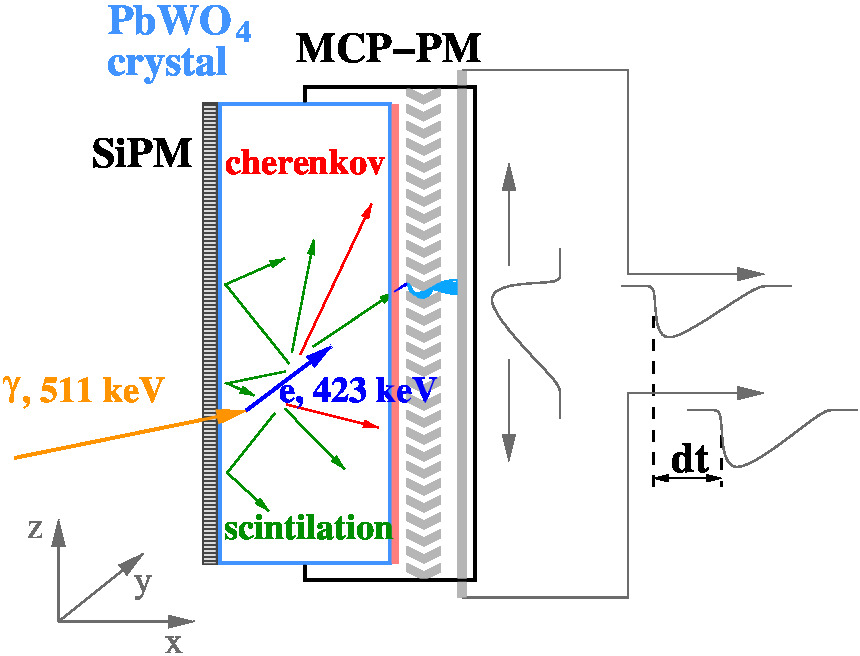Positron emission tomography (PET) is a powerful nuclear imaging technique used widely nowadays in oncology, cardiology and neuropsychiatry.
The PET technology consists in injecting the patient with a radioactive tracer, of interest to probe a biochemical process. The decay of the tracer emits a positron which annihilate with an electron. As a result of the annihilation, two photons with energy 511 keV are emitted back-to-back and registered by the dedicated detectors. The line-of-response connects the two points where photons are detected and allow to reconstruct the tracer distribution when large statistics events have been accumulated.
The CaLIPSO group works on the development of the the fast and precise light detection technique using Cherenkov and scinitillation photons to boost the time-of-flight (TOF) performance of PET scanners.
In this project we propose and study the concept of a new gamma ray “scintronic” detector targeting a time resolution of the order of 25 ps, with millimetric volume reconstruction and high detection efficiency. Its design consists of a monolithic large PbWO4 scintillating crystal with an efficient photocathode directly deposited on it. With an index of refraction higher for the photocathode than for the crystal, this design negates the total reflection effect of optical photons at the crystal/photo-detector optical interface, and thus largely improves optical coupling between the crystal and the photodetector. This allows to detect efficiently the Cherenkov light produced by 511 keV photoelectric conversions in PbWO4 , and to optimize the detector time resolution. Furthermore, the low-yield, fast scintillation light produced additionally by PbWO4 increases the detected photon statistics by a factor 10, thus fostering accurate (3 dimensional) localization of the gamma ray interaction within the crystal and providing a fair measurement of the deposited energy.

“Scintronic” crystal encapsulated within a MCP-MT. The photocathode is deposited directly on the scintillating crystal. The generated photoelectrons are amplified by a micro-channel late. The amplified signals are collected on a densely pixelated anode plane read out by transmission lines and fast electronics.
For more details see: D. Yvon et al., “Design study of a scintronic crystal targeting tens of picoseconds time resolution for gamma ray imaging: the ClearMind detector.” 2020, JINST 15 P07029, arXiv:2006.14855 [physics.ins-det]
